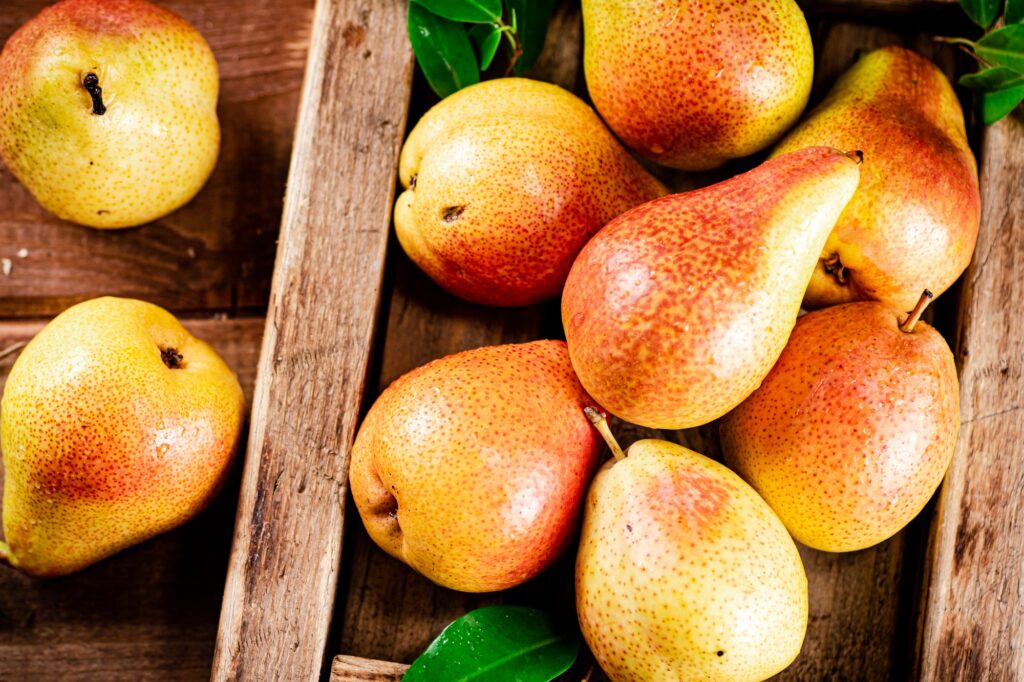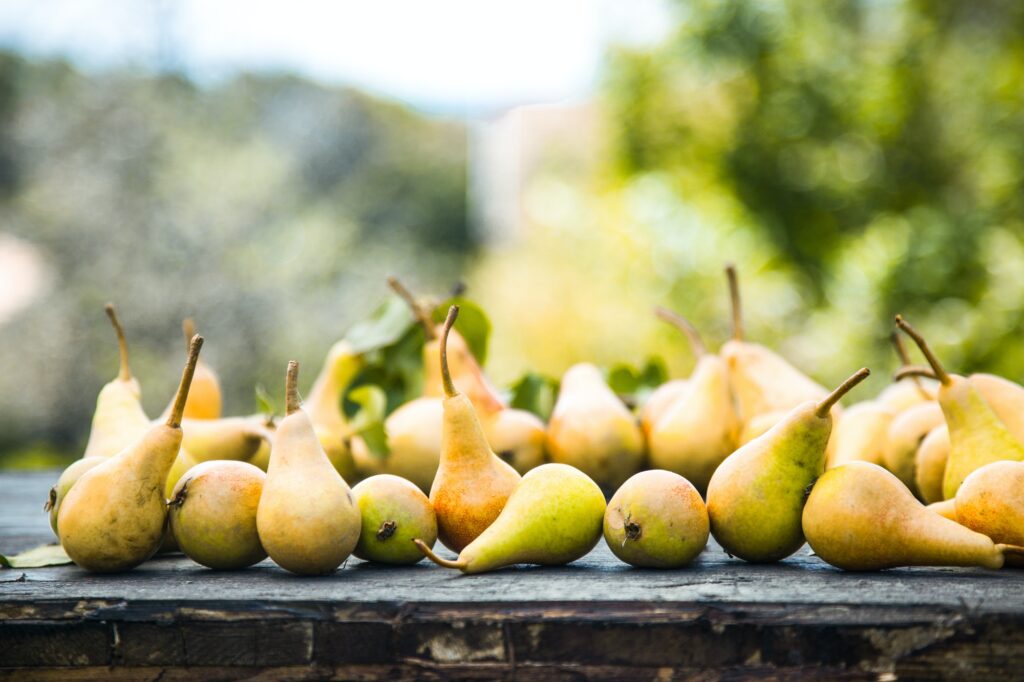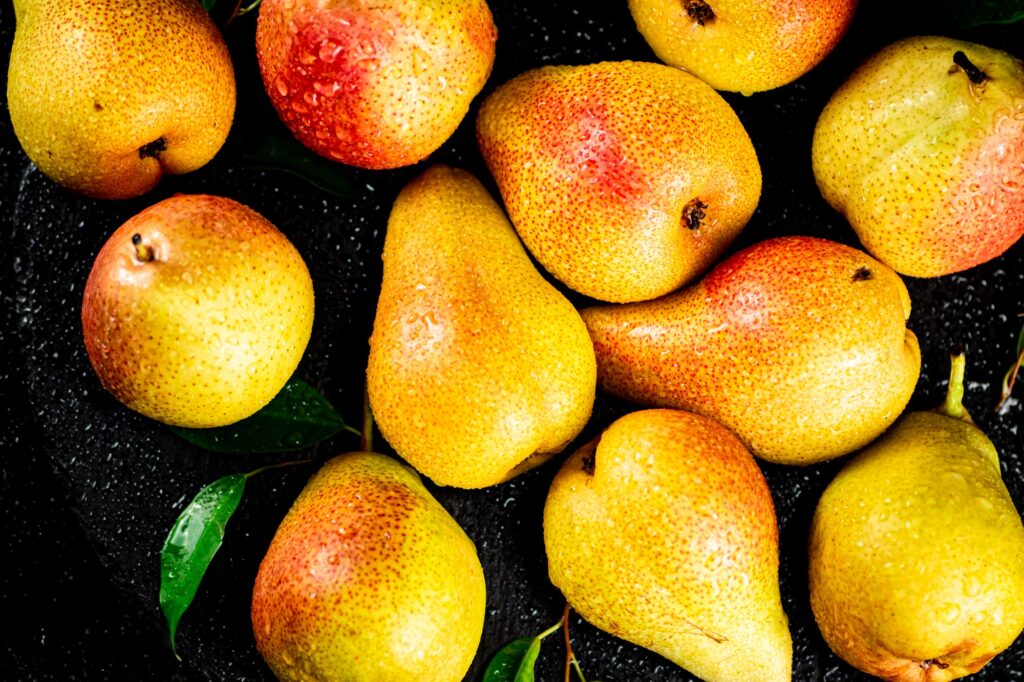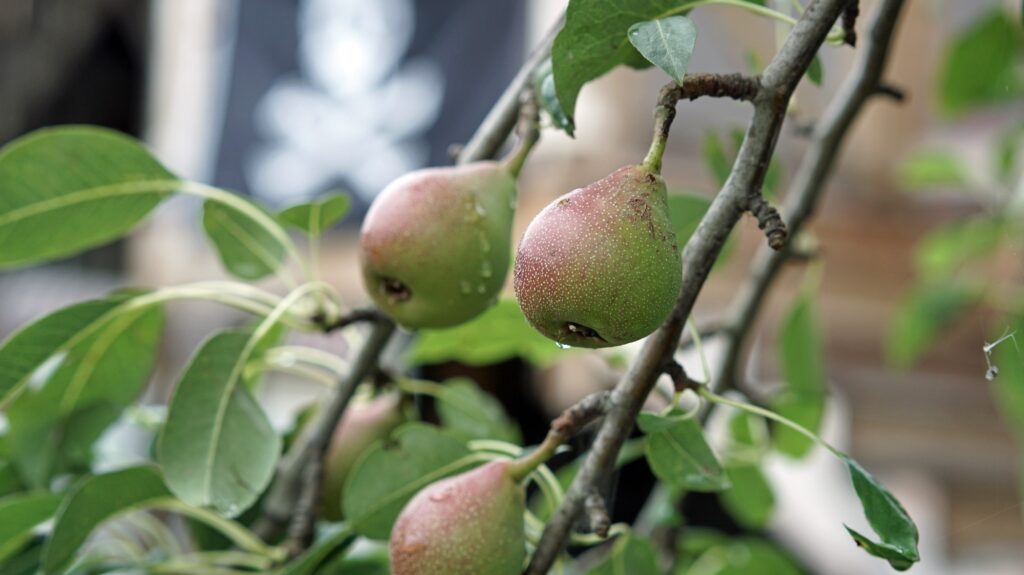12 Interesting Facts About Pears

Introduction
Pears have been enjoyed since prehistoric times, with evidence of their cultivation dating back over 5,000 years. References to pears appear in Greek and Roman mythology, and ancient Chinese texts detail early grafting techniques used to propagate desirable varieties of this nutrient-rich fruit.
Over 3,000 known pear varieties grow around the world today1. The pear tree thrives in temperate regions of Europe, North Africa, and Asia, producing fruit in late summer through fall. These hardy trees can live for over 100 years.
From ancient lore to modern kitchens, the pear has sustained its popularity through the ages. Its subtle sweetness and floral aroma make it a favorite for eating fresh or incorporating into recipes. Let’s uncover more about this timeless fruit.
Interesting Facts About Pears

1. Pears are packed with nutrients
Pears are fat-free and cholesterol-free while providing fiber, vitamin C, vitamin K, potassium, and copper. They also contain beneficial plant compounds like flavonoids, carotenoids, and phenolic acids, which function as antioxidants. The skin of the pear has the highest concentration of these protective phytonutrients.
2. The majority of pear varieties have a buttery texture
Most pears have a juicy, buttery flesh that gives them their characteristic silky texture. They are often described as a cross between an apple and a banana. The smooth, creamy interior makes pears perfect for eating raw or whipping into a puree.
3. Pears ripen from the inside out
Pears ripen from the inside out, which is why they are picked unripe before their sugars have fully developed. The best way to ripen pears at home is by letting them sit at room temperature. They are ripe when the flesh near the stem gives slightly under gentle pressure.
4. Pears come in many colors

While green and yellow are the most common, pears also come in hues like red, purple, russet, and speckled. Red-skinned varieties get their color from anthocyanins, the same antioxidants found in blueberries and raspberries.
5. Asia cultivates the most pear varieties
China produces more pears than any other country in the world. Asian pears account for over 75% of global pear production2. The continent’s thousands of native varieties include crisp, apple-like Asian pears.
6. Europe helped shape modern pear varieties
The 17th century marked a period of pear variety cultivation in Europe, giving rise to many favorites still popular today like Bosc, Anjou, and Bartlett. Much early experimentation focused on developing better pears for eating fresh.
7. Pears have many health benefits
Regularly eating pears provides dietary fiber for digestive health, flavonoids for heart health, and antioxidants that may help reduce inflammation and the risk of disease. Their high water content makes them low in calories.
8. Pears can be found in mythology and folklore
In Greek mythology, pears were considered a gift from the gods. Chinese folklore told of a pear tree that bloomed once every 3,000 years. Pears have also been featured in art, songs, and literature over the centuries.
9. Early American colonists brought pear trees from Europe

The first pear trees were planted in America by colonists in the 17th century. However, the fruit was mainly used for cooking rather than fresh eating until new European varieties were imported.
10. The world’s largest pear weighed over 6 pounds 8 ounces (2.948 kg).
The current Guinness World Record for the heaviest pear belongs to a specimen grown in Japan by JA Aichi Toyota Nashi Bukai3. This pear weighed 6 pounds 8 ounces (2.948 kg) and was presented in November 2011
11. Pears are related to apples and roses
Pears belong to the large rose family, which includes fruits like apples, cherries, peaches, raspberries, and strawberries. Their genus name Pyrus comes from the Latin word for pear tree.
12. December is National Pear Month
The pear is honored with its own National Pear Month every December in the United States4. This celebrates the harvest season for fresh pears grown in the U.S.

Frequently Asked Questions About Pears
What are some of the health benefits of pears?
Pears are packed with nutrients and have many health benefits. They provide dietary fiber for improved digestion, flavonoids for better heart health, and antioxidants that can reduce inflammation and disease risk. Pears are also fat-free, cholesterol-free, and low in calories due to their high water content.
How do you know when a pear is ripe?
You can tell a pear is ripe when it gives slightly under gentle pressure near the stem. Pears ripen from the inside out, so feeling softness around the top is a sign its sugars have fully developed and it’s ready to eat.
What is the best way to ripen pears at home?
The best way to ripen pears is by leaving them at room temperature. The ripening process speeds up when pears are kept at around 60-75°F. Once ripe, move them to the refrigerator to slow down ripening. Avoid keeping unripe pears in very hot or very cold areas.
What types of pears are best for baking and cooking vs. eating raw?
Varieties like Bartlett, d’Anjou, and Bosc pears hold their shape well when cooked, so they’re ideal for baking and poaching. Comice and Seckel pears are exceptionally sweet and juicy, making them perfect for eating fresh. Firm Asian pears also make excellent raw snacks.
How should you store pears properly?
To store ripe pears in the refrigerator, place them in a perforated plastic bag away from foods with strong odors. This prevents pears from absorbing other flavors and ethylene gas. Keep refrigerated pears for only 2-3 days maximum before the quality declines.
Conclusion
From its extensive history to immense diversity, the remarkable pear has earned its place as a beloved fruit. Its luscious flavor and versatility shine whether eaten raw or incorporated into both sweet and savory dishes. The pear’s nutrition profile provides compounds that can boost your health. Discover the joys of this fruit for yourself during pear season. Let these fascinating facts inspire you to enjoy pears in new ways.
- https://en.wikipedia.org/wiki/Pear [↩]
- China: 15% increase expected for new Ya pear crop, freshplaza.com/asia/article/162044/ [↩]
- https://www.guinnessworldrecords.com/world-records/heaviest-pear [↩]
- https://www.daysoftheyear.com/days/pear-month/ [↩]





